Warning: Undefined variable $handle_code in /mnt/wp/advicelocal/public_html/wp-content/plugins/click-to-tweet-by-todaymade/tm-click-to-tweet.php on line 243
Warning: Undefined variable $handle_code in /mnt/wp/advicelocal/public_html/wp-content/plugins/click-to-tweet-by-todaymade/tm-click-to-tweet.php on line 243
Site owners checking their web stats can’t have failed to notice the growth in mobile traffic over the last few years. Where mobile once made up a small percentage of visitors, according to data from the market intelligence company SimilarWeb, it now accounts for 56% of all website visits. Most businesses are conscious of the drive toward mobile-friendly sites, with the need to satisfy both Google and their visitors in the quality of their mobile experience.
Recently, though, Google has moved toward a mobile-first indexing policy. Sites that offered a poor mobile experience in the past most likely saw a reduction in overall visitors. Now, however, there are more severe ramifications for anyone ignoring mobile. Sites should be focused on SEO, along with providing an exceptional user experience designed for mobile, with a mobile-first approach.
What is the Mobile-First Index?
As mobile search increases, it’s impossible for Google to treat this as an afterthought. The demand for mobile devices is rising globally, so the need for mobile-first design will, too.
As KPCB reported in the 2017 Internet Trends Report, mobile usage is up to 3 hours per day and desktop usage is now at 2 hours per day, declining from the 2.6 hours per day five years earlier. We’re clearly seeing that as mobile increases, desktop decreases.
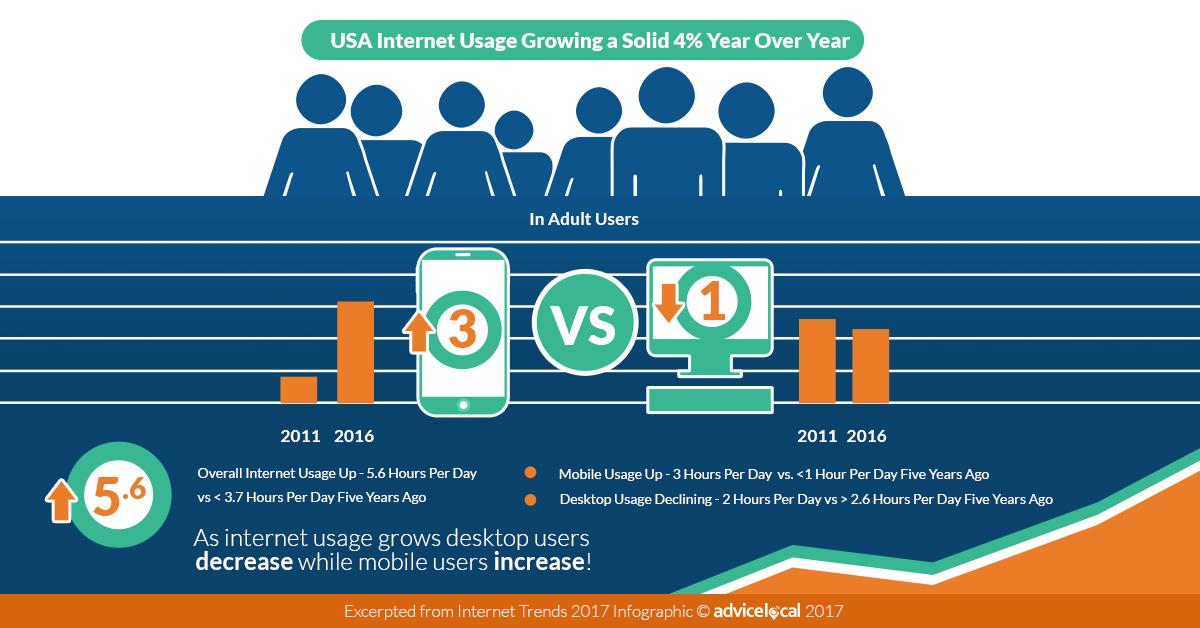
While desktop searches still make up a significant number of all queries, the point has arrived where it makes sense for Google to base their search index on mobile over the desktop experience.
Going forward, the algorithms will look at the mobile version of a site first to determine where a page should rank. Site owners will be notified in Google Search Console when their site has been moved to the mobile-first index. Searchers on both mobile and desktop will be catered to, but if the URL and snippets vary from the desktop version, the mobile site will be the version used.
Why is this Important to Local Businesses?
If a site has a responsive design, using consistent content and structured data markup, there shouldn’t be an issue with the switch. However, for sites that operate different mobile and desktop versions, Google will be crawling the mobile site. Businesses that have developed mobile sites on a subdomain, optimizing the pages for mobile, need to rethink this approach. These mobile sites on subdomains typically lead to stripped down versions of the main site, offering minimal content or structured data. When Google makes the mobile index the primary for a mobile site of this kind, the user experience will be significantly worse for desktop users.
What Should Businesses Do Next?
It is important to find out if the business’ site is ready for the mobile-first index. There are various tools to assess if a site is optimized for mobile devices, but it is also worth considering whether any current mobile strategy will be ideal going into the future.
1. Use the Mobile-Friendly Testing Tool
The mobile-friendly testing tool offers a quick way to see if Google can find any usability issues that would provide a negative experience for mobile device users. The tool is easy to use and offers some quick fixes for simple problems. The tool also provides a snapshot showing how a page looks on a mobile device.
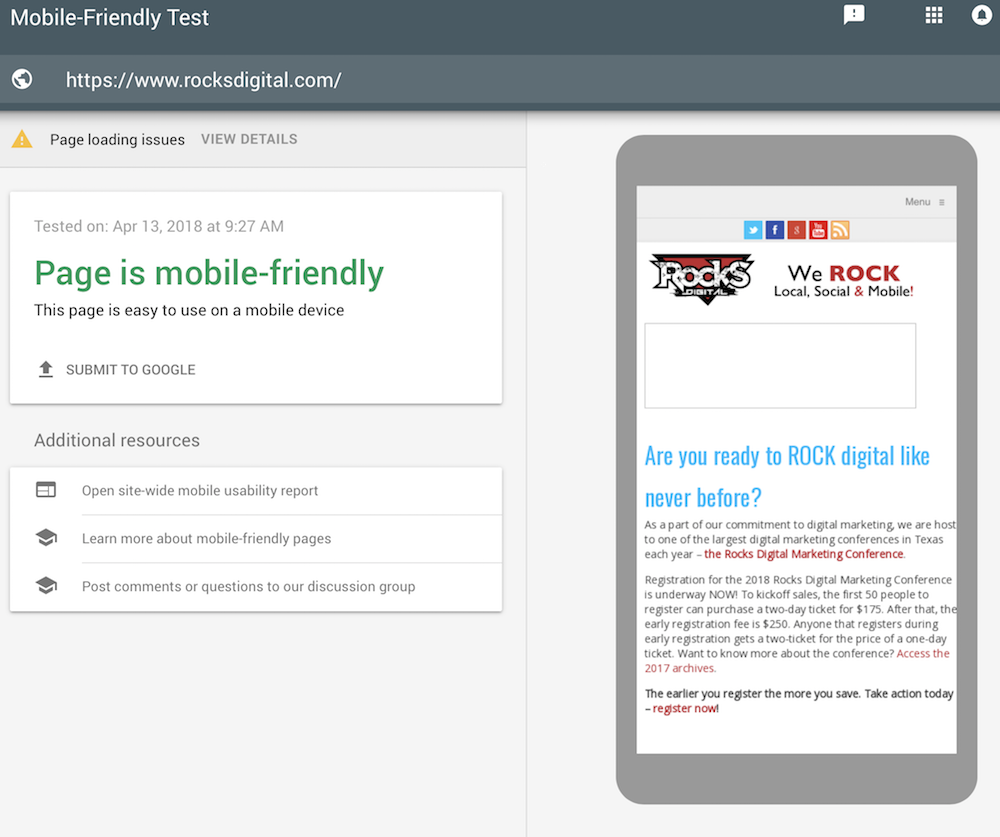
The example above shows that the Rocks Digital website is mobile-friendly, however, there are some page loading issues that the webmasters need to look into further. These could be a temporary issue, such as the server responding too slowly, or something more significant, like a script failing to run or an image loading improperly.
2. Use the Google Winning on Mobile Tool
Fast loading times are vitally important to a successful website. Google has increased the importance of speed to SEO, with users responding negatively to slow loading times. The Google Winning on Mobile tool gives webmasters a quick review of a site and features an option to have a report emailed to them.
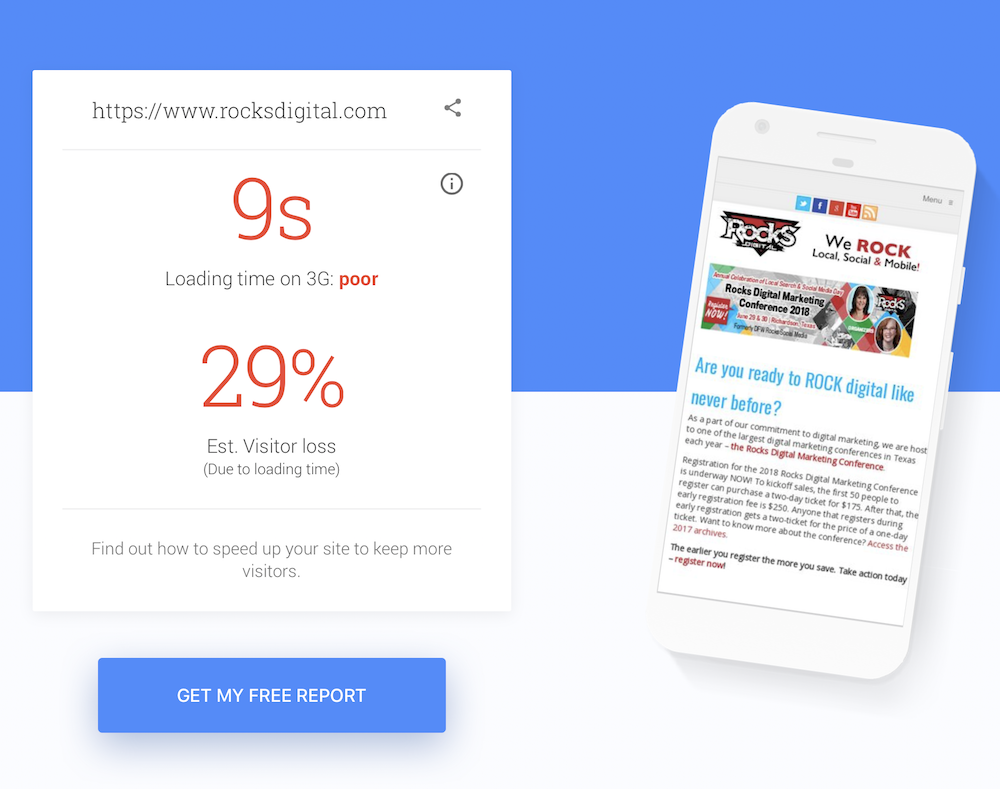
As shown in the above example, this website receives a poor rating and a 9 second loading time.
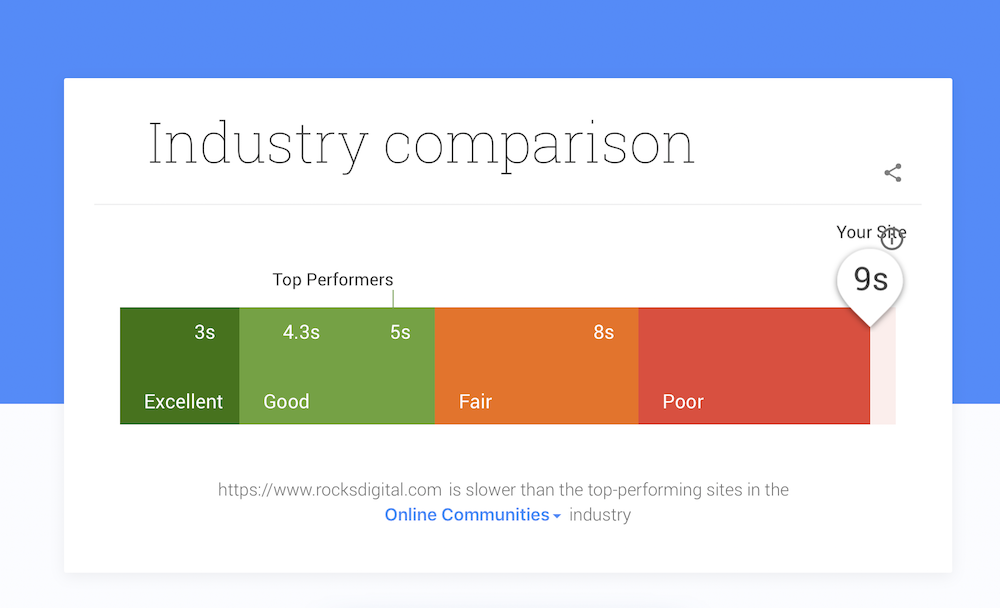
It seems this website compares to others in the industry in the poor category. Again, it’s an issue that needs to be addressed in order to index higher once Google rolls out the mobile-first index for this website.
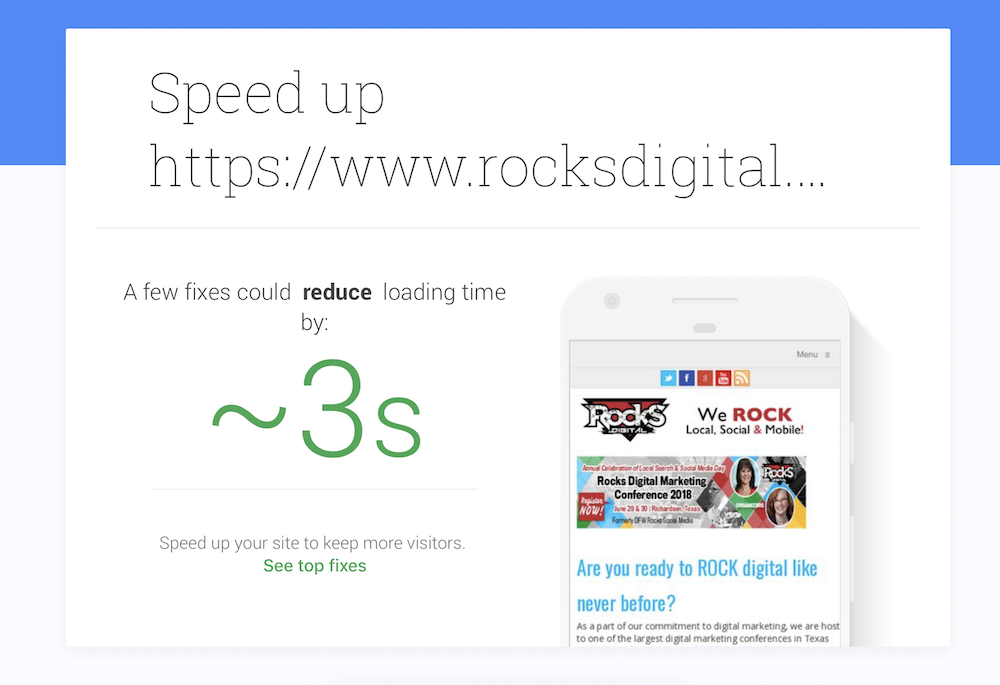
According to the report, this site can be sped up to 3 seconds, which will put in the excellent range by correcting some errors. Most likely, the errors reported through the Google Search Console mobile-friendly testing tool reported in example one would speed up this website significantly
3. Compare to Competitor Sites Using Mobile Scorecard
The Mobile Scorecard will calculate the loading speed of a mobile page, while calculating potential revenue gains from making improvements. It is also possible to compare a page with the results of competing sites, helping to get an understanding of industry expectations and standards.
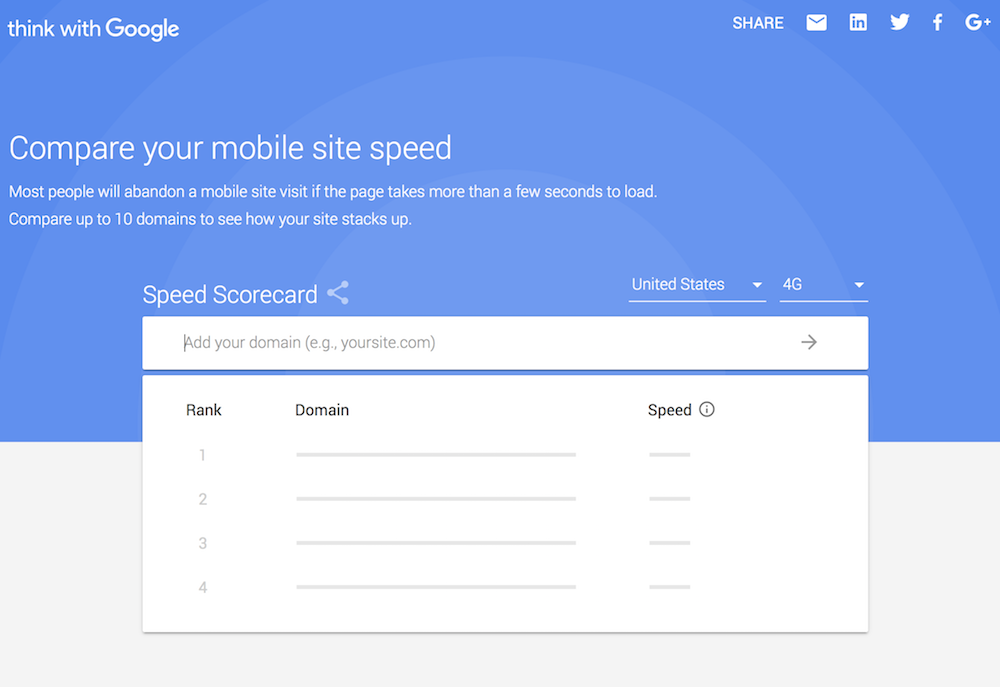
It seems this tool doesn’t work on all websites at this point, as it is a newer tool. Here’s a WordStream article explaining what data is included in more detail.
4. Check for Crawl Errors in Search Console
Within the Google Search Console, go to Crawl Errors and choose the Smartphone option. You can quickly see any reported crawl errors relating to mobile devices, which will often be distinct from desktop crawling issues. The common problems reported include unsupported Flash content, URLs blocked for smartphones, and faulty redirects taking users to irrelevant pages. With a good picture of the reported errors, site owners can amend any issues to satisfy Google.
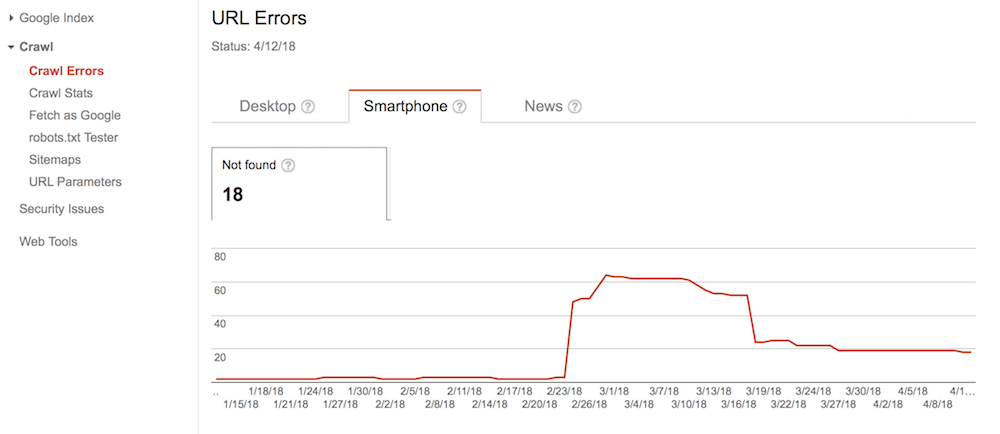
In the example above, this site had something happen on February 23 that caused a spike in crawl errors. Without more research, I wouldn’t be able to share exactly what the issue was, but it did dip back down somewhat about three weeks later. There are still a few issues that need to be addressed for it to be ready for the mobile-first index.
Mobile Testing Tools are Just the Start
While the above website definitely has some issues to resolve to prepare for the mobile-first index, this is only the start.
Once all the errors reported above have been corrected, the business will want to make sure the site is SEO optimized for the mobile-first index. We’ll cover this in detail next time.
Local businesses are living in a mobile-driven world, and competition is not getting scarcer. But don’t worry – the Advice Local team can help. Download our eBook, Making the Most of the Mobile Experience, and let us be your guide.



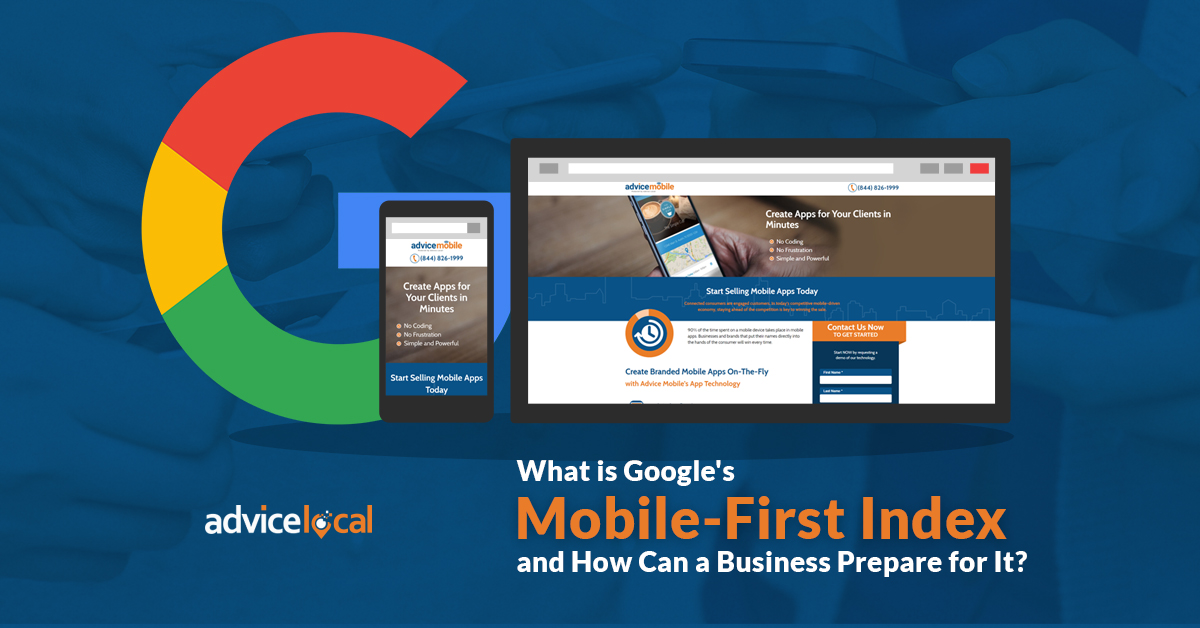
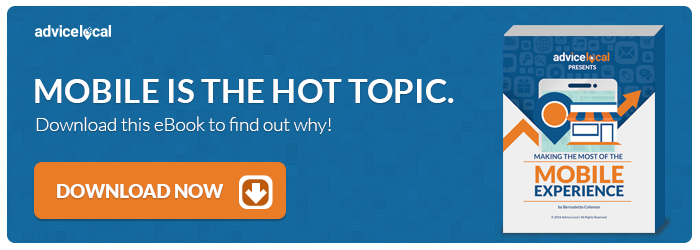
One thought on “What is Google’s Mobile-First Index and How Can a Business Prepare for It?”
Comments are closed.